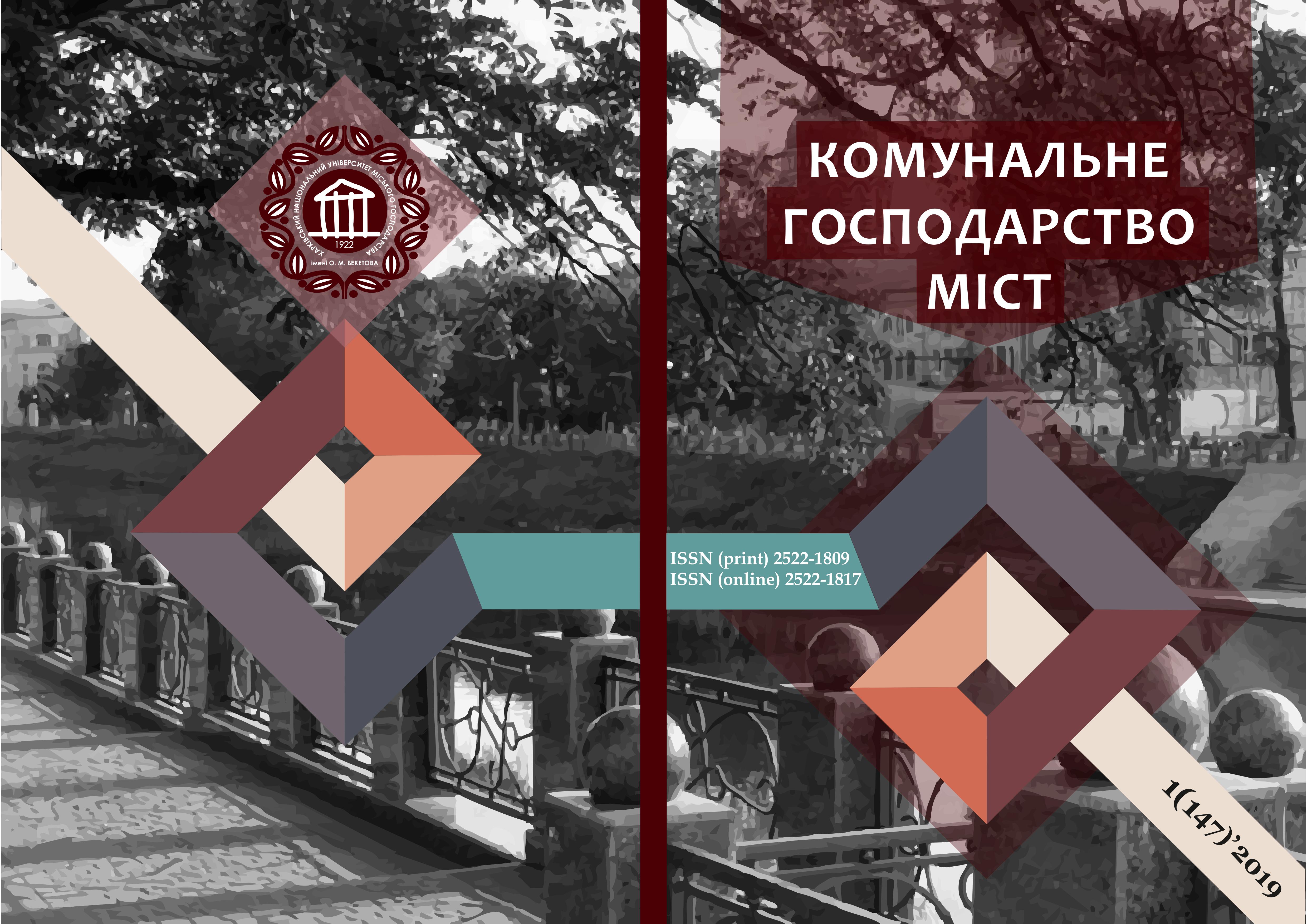ACCELERATED, LOW-COST DETERMINATION OF THE VOLUMETRIC CONFIGURATION OF CONTAMINATION OF SOIL COMPONENTS BY THE POINT SOURCE OF ORGANOCHLORINE PESTICIDES
Array
Keywords:
warehouse, chlorine-organic pesticides, probi, exponential regression of deposits, determinism, volume of concentrationAbstract
The paper shows the relevance of solving in Ukraine the problems of polluted lands with organochlorine pesticides and the need for data on the volumetric configuration of soil components polluted with organochlorine pesticides above their maximum permissible concentrations, indicates a significant duration and high cost of environmental monitoring of these lands, carried out by traditional methods. reduce the amount of sampling and analysis of samples of soil components for polluted organochlorine pesticides in the territories adjacent to the former warehouses of their storage. The process is based on an exponential relationship between the concentration of pollutants, the depth of their penetration into the soil and the sampling distance from the center (point) of pollution, further mathematical analysis of these concentrations of pollution and the calculation of the volumetric configuration of soil components polluted with organochlorine pesticides to their maximum allowable concentrations. The stages of the process are proposed to be implemented in the following sequence: from four to ten samples of contaminated soil components are selected at random points, at a depth of up to one meter; in the samples taken, the concentration of organochlorine pesticides is determined; calculate the unknown parameters of the regression equation describing the nature of the volume concentration of contamination of soil components; using the found values of the unknown parameters of the regression equation, a mathematical calculation of the concentration of organochlorine pesticides at points with the distance and sampling depth parameters is carried out; using the coefficient of determination, the quality of the adopted regression is checked; parameters and volume of soil components polluted with organochlorine pesticides over their maximum permissible concentrations are calculated.
References
Yurchenko, A.I., Velichko, G. M. and others. (2014) Pollution of environmental objects in the area of former places of storage of unsuitable pesticides in the Kharkiv region. Zb.na.Stat X international. sci. pract. conf. "Environmental safety: problems and solutions", September, 2014, Kharkiv, 200-210.
Ivanankov, M. Ya. (2016) Peculiarities of migration and accumulation of organochlorine pesticides in the soil-plant system in the conditions of the western forest-steppe of Ukraine: diss. Cand. s - sciences, special 03.00.16 – Ecology. Lviv, 168.
Kurdyukov, V.V. (1982) Consequences of pesticides on plant and animal organisms. -M .: Kolos, 128.
Iwata, H., Tanabe, S., Ueda, K., Tatsukawa, R. (1995) Persistent organochlorine residues in air, water, sediments, and soil from the Lake Baikal Region, Russia. Environ. Sci. Technol, 29, 792-801.
Kornet, V.A., Pidlisniuk, V.V. (2010) The problem of unsuitable and forbidden pesticides in Ukraine and their impact on the health of the population. "Environmental safety", 2, 10, 43 – 45.
Stockholm Convention on Persistent Organic Pollutants (2001). Stockholm, Sweden, 179.
Lajoie, G., Layton, A.C., Sayler, G.S. (1997) Bioremediation process design utilizing in situsoil washing. Pat. 5618728 (USA). Priority 6.03.1995. Published 8.04.1997.
Rulkens, W.H., Tichy, R., Grotenhuis, J.T.C. (1998) Remediation of polluted soil, and sediment: perspectives and failures. Wat. Sci. Tech., 37, 8, 27–35.
Paulson, D. Jr. (1998) Pesticide Remediation in Soil and Water.Eds. Kearney P., Roberts T. Willey, New York,21—33.
Gan, J.Y., Koskinen, W.C. (1998) Pesticide Remediation in Soil and Water.Eds. Kearney P.C., Roberts T.R. Wiley, Chichester, 59—84.
Iutinskaya, G.O., Lohanska, V.Y., Pindrus, A.A., Yamborko, N.A. (2006) Bioremediation of Soil Contaminated with Pesticides. 1st All-Ukrainian Congress of Ecologists: Intern. Sci.-Tech. Conf., October 4-7, 2006: Theses of Papers. Vinnytsya, 134.
Ranked list of the best available technologies for cleaning contaminated areas and eliminating accumulated environmental damage (n.d.) Retrieved from: https://studfiles.net/preview/3912843/
Yankevich, M.I., Khadeeva, V.V., Murygina, V.P. (2015) Soil bioremediation: yesterday, today, tomorrow. Interdisciplinary scientific and applied journal "Biosphere", 7, 2, 199 - 207.
Yurchenko, A.I., Asin, V.I., Velichko, G. M. and others. (2014) Monitoring of environmental pollution in the area of the location of objects of high ecological hazard in the Kharkiv region . In the book: Innovative ways of solving actual problems of the basic industries, ecology, energy and resource saving: a collection of works of the XXII International Scientific and Practical Conference. Kharkiv, June 2014 In 2 t. T.1. / State Enterprise "UkrSNC" Energostal "- Kh.,178.
Katkov, M. B., Timoschenko, Yu. I., Yurchenko, A. I. (2016) Approximation of the level of soil pollution around former depots of unsuitable pesticides use in the Kharkiv region. Scientific and Production Magazine "Ecology and Industry", 4, 38-45.
Downloads
Published
How to Cite
Issue
Section
License
The authors who publish in this collection agree with the following terms:
• The authors reserve the right to authorship of their work and give the magazine the right to first publish this work under the terms of license CC BY-NC-ND 4.0 (with the Designation of Authorship - Non-Commercial - Without Derivatives 4.0 International), which allows others to freely distribute the published work with a mandatory reference to the authors of the original work and the first publication of the work in this magazine.
• Authors have the right to make independent extra-exclusive work agreements in the form in which they were published by this magazine (for example, posting work in an electronic repository of an institution or publishing as part of a monograph), provided that the link to the first publication of the work in this journal is maintained. .
• Journal policy allows and encourages the publication of manuscripts on the Internet (for example, in institutions' repositories or on personal websites), both before the publication of this manuscript and during its editorial work, as it contributes to the emergence of productive scientific discussion and positively affects the efficiency and dynamics of the citation of the published work (see The Effect of Open Access).

